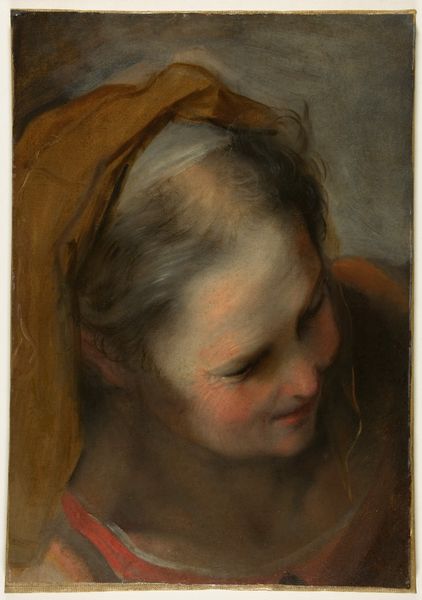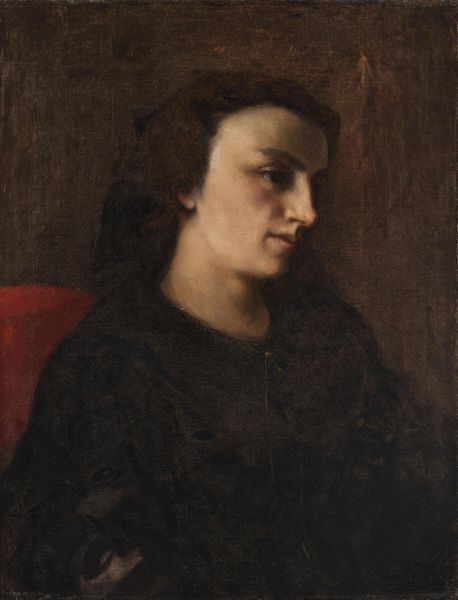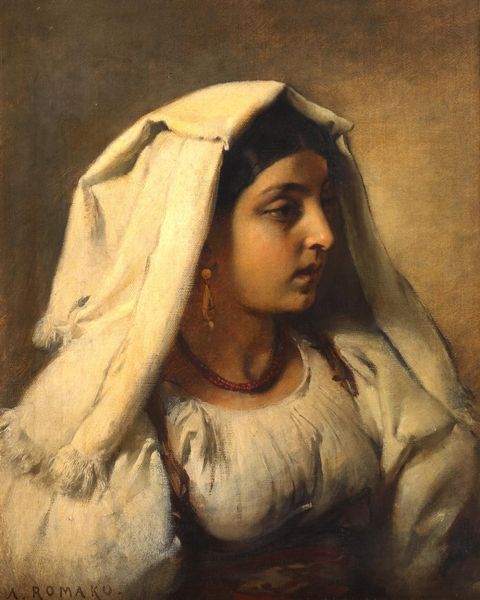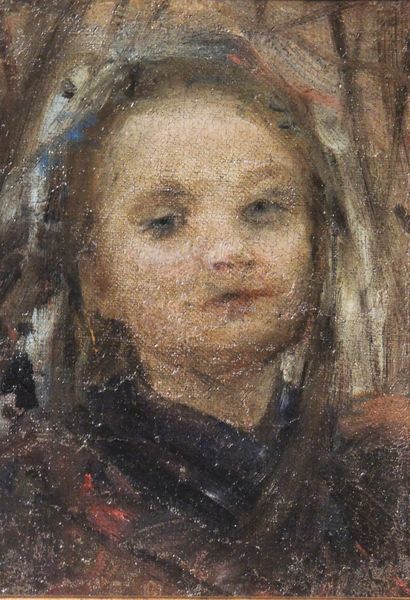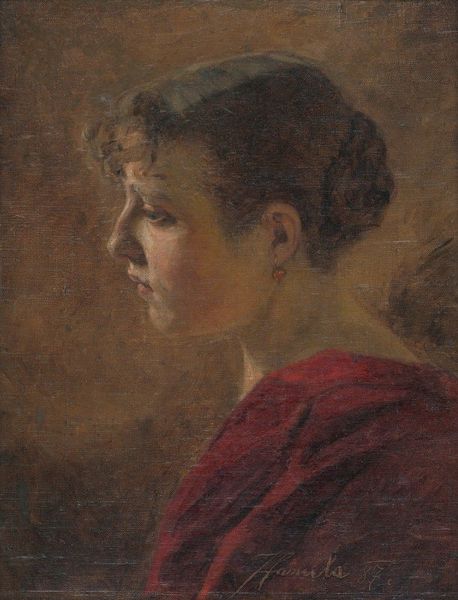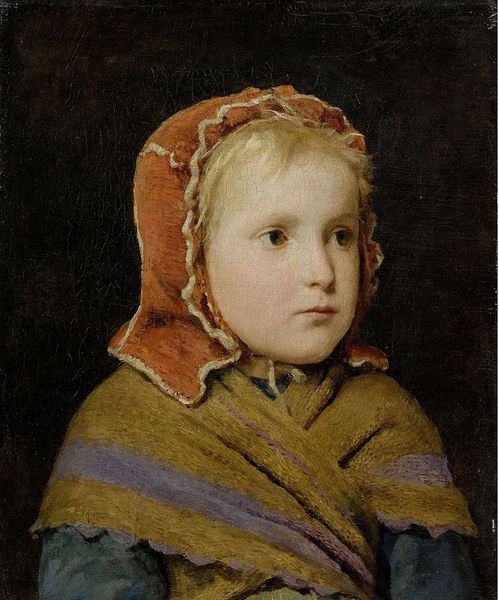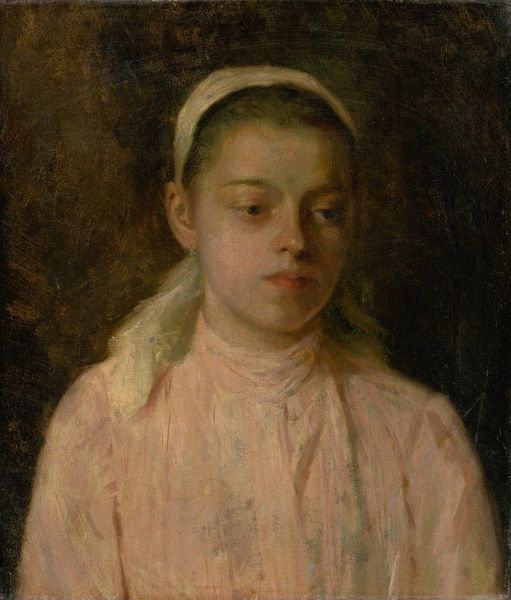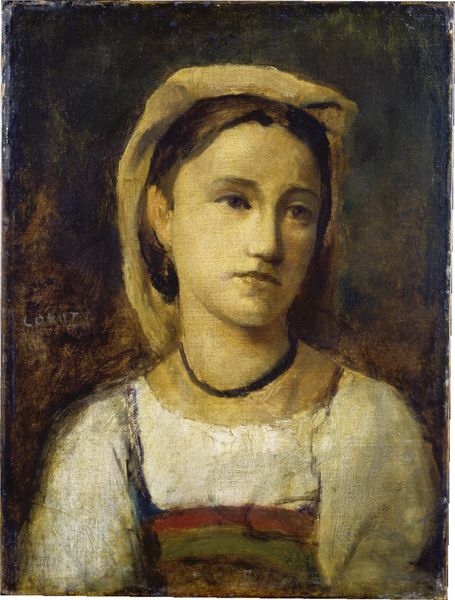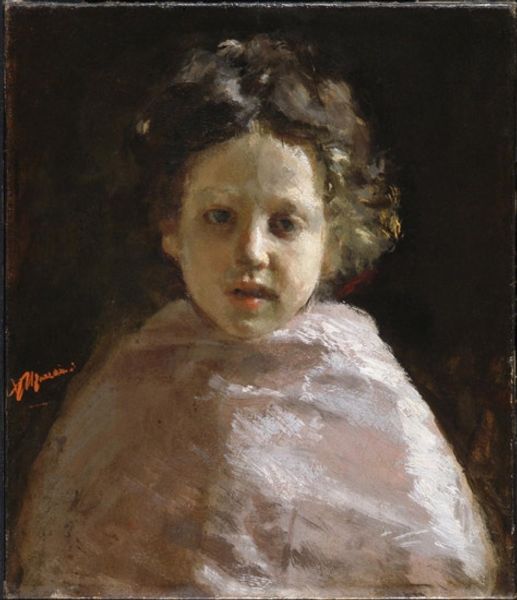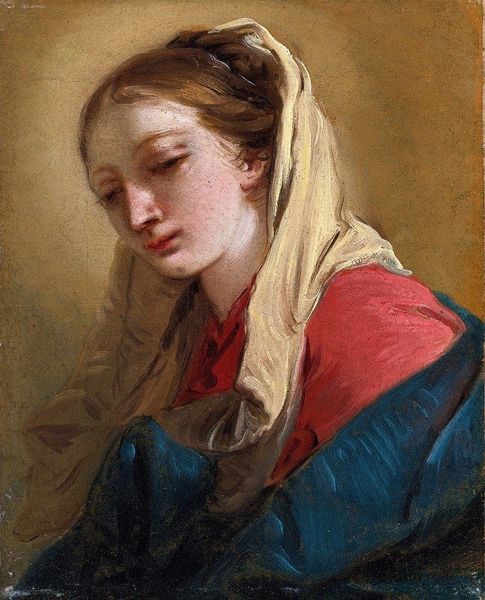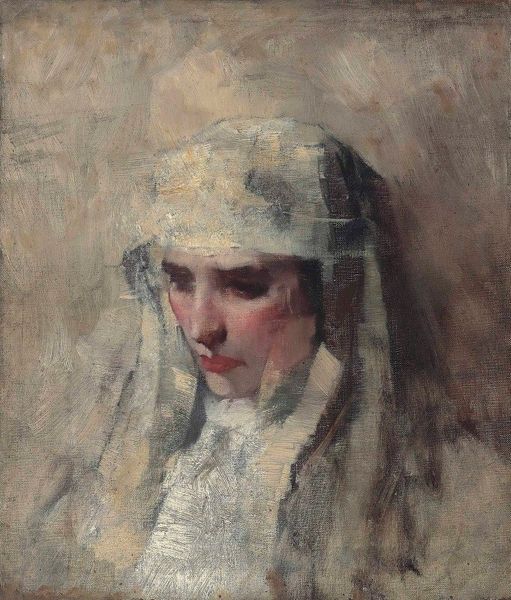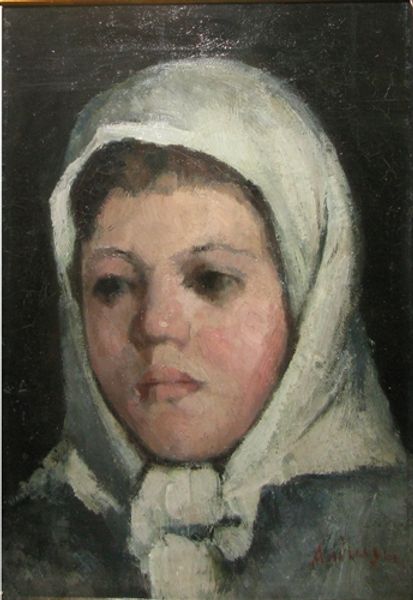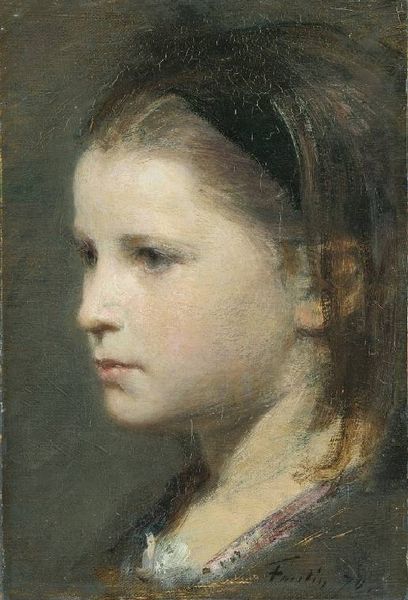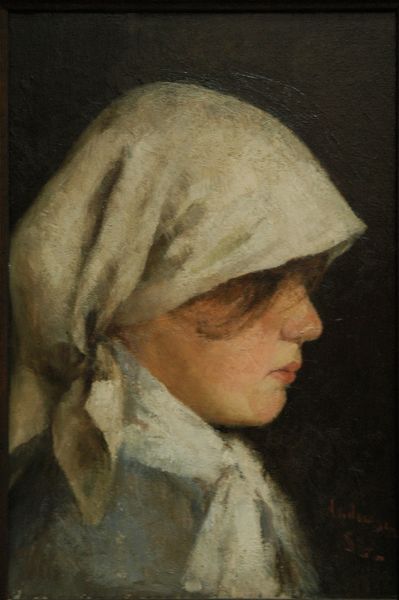
painting, oil-paint, impasto
#
portrait
#
painting
#
oil-paint
#
oil painting
#
impasto
#
intimism
#
portrait art
#
realism
Dimensions: 38 x 33 cm
Copyright: Public domain
Curator: Take a moment to regard "The Sphinx," an oil on canvas painted in 1887 by Pellizza da Volpedo. Editor: It's... surprisingly intimate for a title like that. I was expecting something grand, but it's rather subdued and personal in scale. Curator: Exactly. While titled "The Sphinx", it offers more a character study in realism with elements of intimism. I’m interested in the labor involved in depicting such nuanced shading, look at the ways the brushstrokes coalesce into a readable face. And of course, in its time, oil paint itself, as a pre-packaged substance, enabled specific ways of production in a studio like Pellizza da Volpedo's. Editor: Formally speaking, there’s such an incredible contrast. The rough impasto in the headscarf fights against the soft blending of the face. And the pose, that lowered gaze, creates an almost melancholic atmosphere, further emphasized by the darker hues enveloping her form. Curator: Considering its likely model, that is Giuseppe Pellizza da Volpedo’s sister-in-law, Teresa Bidone, these contrasts in materiality become symbolic, speaking of an almost impossible co-existence, a balance that seems barely held. How were the realities of working women perceived and negotiated at the time? Editor: Perhaps the rough texture of her headdress represents labor, then? But back to the visual elements, the artist positions us—the viewers—in a dominant position looking *down* at the sitter; despite that the downcast eyes give her an internal, perhaps secretive power. Curator: Fascinating. Do you feel, with such intimist pieces, that he's challenging established ideas of power? I see him working to create a narrative around a woman whose interiority is now foregrounded as a mystery rather than a given. How does that shift art's relationship to labor and social hierarchies? Editor: I see your point. This goes beyond a straightforward portrait. I read it more as an enigma, a conscious visual play of power relations created by pose, texture, and gaze. Curator: Perhaps that very enigma becomes his contribution to social discourse. Editor: I think that's very possible. Considering the artistic approach to representation in this portrait brings unexpected insights to unpack those social and production questions, wouldn't you agree?
Comments
No comments
Be the first to comment and join the conversation on the ultimate creative platform.
